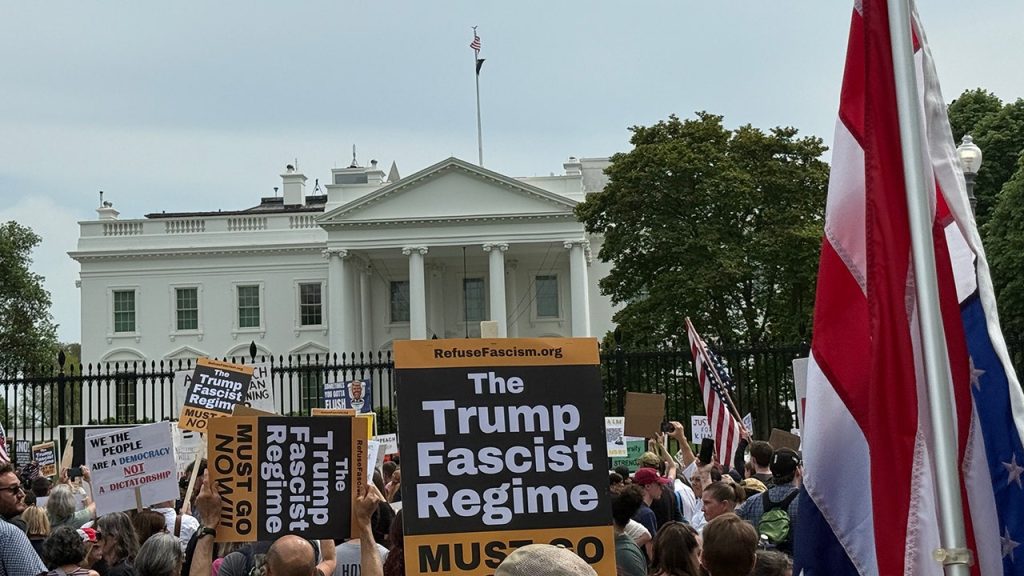On a day when families were celebrating Easter, thousands of protesters took to the streets across the United States for what organizers labeled “A National Day of Action.” Events coordinated by the “50501” movement occurred in all 50 states, targeting policies enacted by President Donald Trump. Over 700 events were documented nationwide, marking one of the largest protest efforts since Trump took office in January. The protests were strategically planned not only for their immediate impact but also to coincide with the 250th anniversary of the Battles of Lexington and Concord, symbolizing the ongoing struggle for civil rights.
| Article Subheadings |
|---|
| 1) Overview of the National Day of Action |
| 2) Key Locations and Gatherings |
| 3) Motivations Behind the Protests |
| 4) Government Response to the Protests |
| 5) The Broader Implications of the Movement |
Overview of the National Day of Action
Organized by the grassroots movement known as “50501,” the National Day of Action was a widespread demonstration against what many participants see as detrimental policies enacted by President Trump. This movement, symbolizing fifty states uniting in a collective capital action, saw more than 700 events spring up across the country on a single day—April 19. The protests were part protest, part celebration of American democracy, emphasizing the importance of civic engagement and civil rights. Demonstrators used social media and online platforms to organize the protests effectively, distributing printable posters and creating Google Maps to help participants find their nearest events.
Key Locations and Gatherings
While events were held nationwide, Washington, D.C. served as a focal point for many. Demonstrators gathered just steps from the White House, showcasing their handmade signs and rallying cries directly in front of the iconic building. Observers watched as crowds chanted slogans such as “Hands Off Our Rights” and “Stop the Power Grab.” Many protesters highlighted the administration’s increasing use of executive orders as a significant point of concern. Other cities, including Anchorage and Atlanta, witnessed similar gatherings, featuring large turnouts and impassioned speeches aimed at informing attendees about the implications of current policies.
Motivations Behind the Protests
The drive behind the protests was multifaceted, with organizers drawing attention to a range of issues, including civil rights rollbacks, executive overreach, and mass deportations. A notable reference during the protests was the historical context of April 19, marking the anniversary of the Battles of Lexington and Concord, serving to remind participants of America’s foundational battles for freedom. Activist groups aimed to push back against measures perceived as oppressive, such as sweeping immigration policies exemplified by the controversial deportation of individuals like alleged MS-13 member Kilmar Abrego Garcia. Many protesters pledged to continue their civil protests and advocacy until their concerns were addressed by lawmakers.
Government Response to the Protests
As the protests unfolded, the White House remained largely silent, with officials not providing an immediate public response to the demonstrations even as they gained widespread media attention. The lack of commentary from the administration prompted further speculation regarding the government’s acknowledgment of the movement’s grievances. Protesters, however, maintained that they would not be deterred by governmental inaction, reiterating their commitment to advocating for their rights and the welfare of underprivileged communities. Many emphasized that they were there not just for one day of activism but as part of an ongoing struggle.
The Broader Implications of the Movement
The broader implications of the National Day of Action could be significant for both the protesters and the political landscape. With a decentralized leadership structure and a focus on long-term mobilization, the movement aims to create a lasting infrastructure to support civil engagement at the community level. Organizers believe the current political climate necessitates sustained activism to address pressing issues related to social justice and civil rights. By mobilizing their communities, they seek not only to resist perceived injustices but also to foster solidarity among disparate groups and cultivate a stronger narrative around civic responsibility.
| No. | Key Points |
|---|---|
| 1 | The National Day of Action mobilized thousands across all 50 states in protest of Trump policies. |
| 2 | Protests in Washington D.C. centered around the White House, with participants expressing their concerns directly to the administration. |
| 3 | Activists emphasized their intent to fight against perceived civil rights rollbacks and executive overreach. |
| 4 | The White House has yet to issue an official response to the protests and the movement’s concerns. |
| 5 | The movement aims to create lasting community infrastructure for ongoing resistance and advocacy. |
Summary
The National Day of Action serves as a stark reminder of the passionate engagement of American citizens in the democratic process. With thousands participating in protests across the nation, the movement showcases both the urgency of the issues at hand and the willingness of the people to mobilize for change. As demonstrations continue and the government remains silent, the long-term consequences of these actions may significantly influence not only public policy but also the overall landscape of civil rights in the United States.
Frequently Asked Questions
Question: What is the purpose of the National Day of Action?
The National Day of Action aims to unite citizens across the United States to protest policies seen as detrimental to civil rights and social justice, showcasing collective civic engagement.
Question: How did the protests coincide with historical events?
The protests were timed to coincide with the 250th anniversary of the Battles of Lexington and Concord, symbolizing the ongoing struggle for liberty and justice.
Question: What are some challenges faced by the protesters?
Protesters face challenges including potential governmental indifference, backlash from opposing political groups, and the ongoing need for sustainable activism and community engagement.


